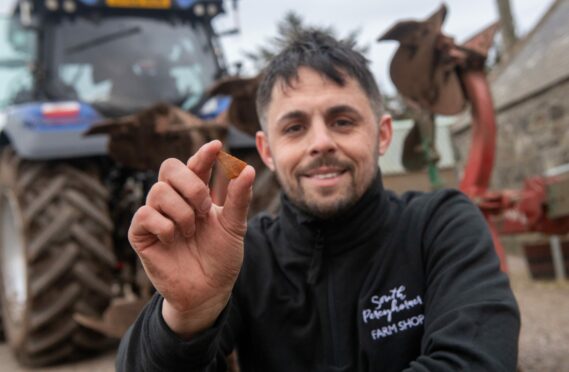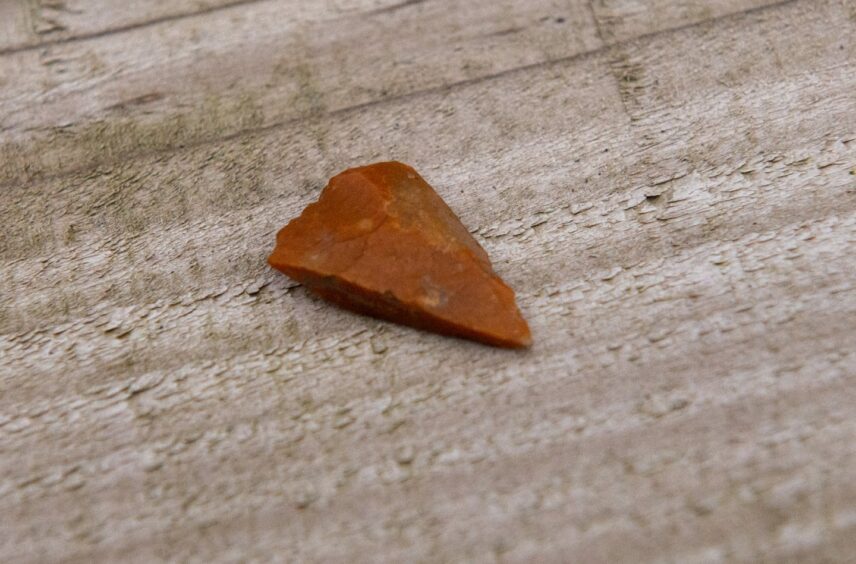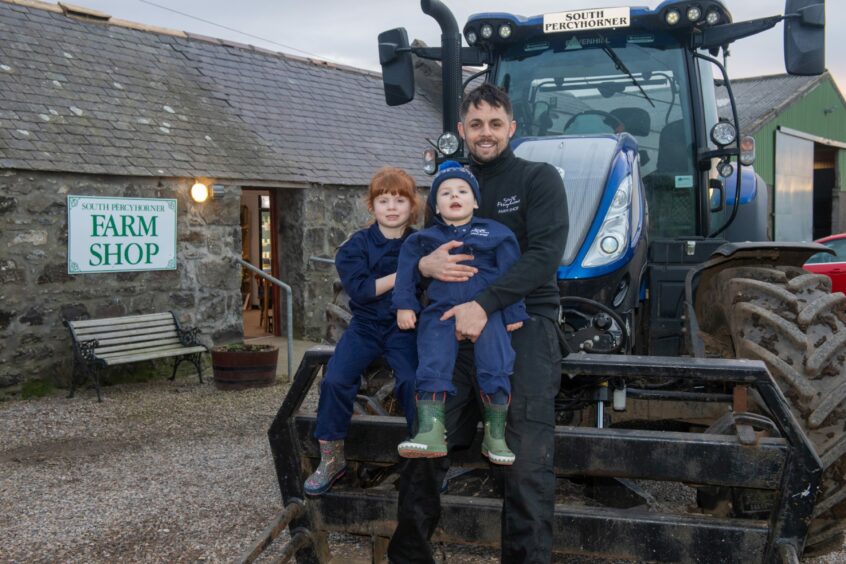When a Neolithic hunter in the north-east of Scotland fumbled and dropped the arrowhead that was dug up on a farm near Fraserburgh yesterday, work on Stonehenge had not yet begun.
It would be at least another 1,000 years before King Ramesses II ordered the creation of the temples at Abu Simbel in Egypt, and another millennium beyond that before the Parthenon was built.
All that time, the shiny, pointed, orange piece of flint sat in the soil on what would eventually (eventually) become South Percyhorner Farm, on the A98 south-west of the Aberdeenshire town.
That is, until owner Gary Summers spotted the sunlight glinting off it, picked it up and put it in his pocket – possibly the first human to handle it in 6,000 years.
It was not the first time he has come across flint tools after ploughing them up, but he said this was in a better condition than any he has seen before: “Like it was used yesterday.”
He got in touch with the archaeology department of Aberdeen University, and was passed over to Aberdeenshire Council archaeologist Bruce Mann, who dated the artefact to the Neolithic period between 4,500 and 6,000 years ago.
Mr Summers said: “It would be interesting to see what was happening all that time ago on the farm. You never know what was going about.
“I was just holding it thinking, someone 4,500 to 6,000, however long ago, was holding this before me.
“You just think, what were they doing with it? Were they hunting, were they protecting their land? What was the reason for this arrow being made?”
Aberdeenshire in the Neolithic age
As a north-east farmer, Mr Summers’ professional lineage dates back about as far as the arrowhead he turned up.
It dates from a time when agriculture was first brought to the region, by people who sailed over to harbours such as Stonehaven from the European continent – most likely northern France according to current evidence.
Mr Mann, the archaeologist, said: “You’d have these groups coming across by boat and effectively colonising, coming across and setting up extended families, and then starting the process of changing the land.
“They’re cutting down trees, they’re building permanent buildings, and the landscape starts to open up and radically change as they have more of an impact and it becomes more of a managed landscape as opposed to a wild landscape.
“They would have brought new technology with them, and the tools are just part of that.”
The arrowhead from South Percyhorner Farm was manufactured using techniques distinct from the earlier Paleolithic and Mesolithic, allowing Mr Mann to date it with some certainty – though not much precision – within a period lasting 1,500 years.
As for the animals the hunter may have been after, he said: “We’ve got the usual sort of wild fowl in terms of birds.
“You’d have wild boar, deer, and at the start of the Neolithic as well you’d still have the aurochs, the huge, wild cattle that existed as well.
“They would have been quite an impressive animal to take on, not something that would have been done lightly.”
Mr Summers said: “I find stuff like that fascinating.
“There’s a lot of things that people have found in the area, and a lot of folk think it’s just a bit of rubbish, but it was just different.
“Not something you find every day.”


